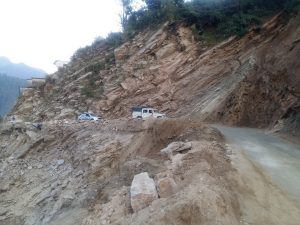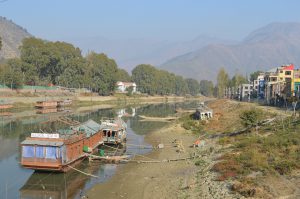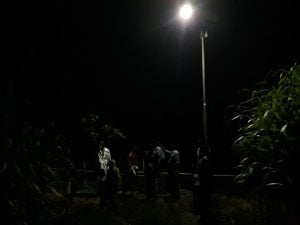Standing almost 4,000 metres above sea level on top of the Chorabari glacier, we look down at the remains of a lake. The memories of the havoc caused by the now-dried lake are hard to erase.
On the morning of the Kedarnath flood, June 17, 2013, Chorabari lake breached its banks, bringing a massive flash flood – complete with debris and boulders – down the slope to Kedarnath. It almost wiped away the town and then roared down the Mandakini – one of the main tributaries of the Ganga – and killed thousands in Uttarakhand. Many are still missing and several bodies are still being discovered in the higher reaches of the Himalayas.
A thin thread of water trickles down the middle of the lake bed and drains out through the broken embankments. The lake where the ashes of Mahatma Gandhi were immersed – leading to its official name Gandhi Sarovar – is now a collection of mud and sand.
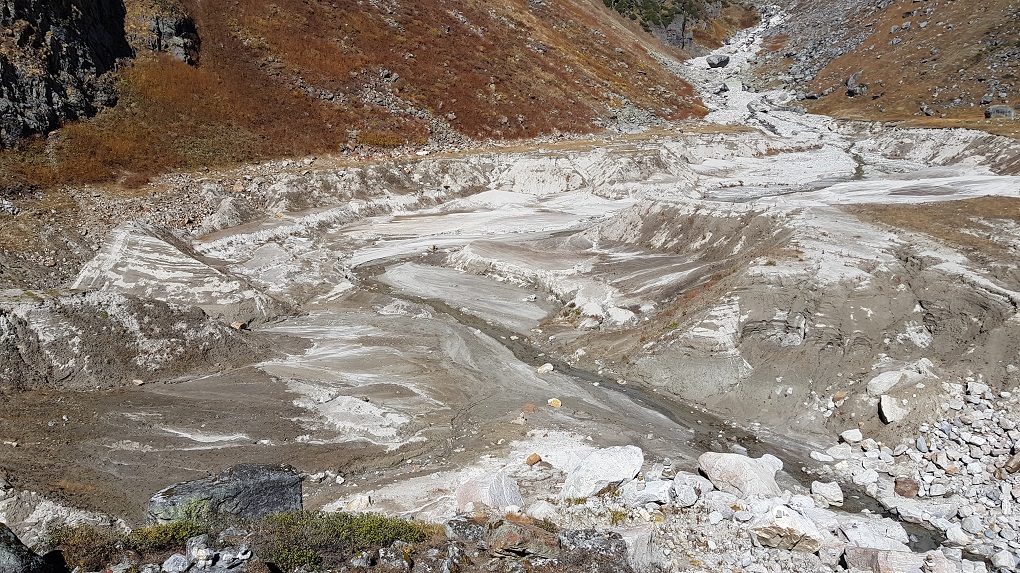
Chorabari lake before the floods
Until it burst its banks, Chorabari was one of 14 lakes spread over the Mandakini river basin, all above 3,700 metres. At a height of 3,960 metres, Chorabari lake was almost two kilometres upstream of Kedarnath.
The lake had originally formed from meltwater at the snout of the Chorabari glacier, but due to climate change, the glacier had retreated more than 200 metres, leaving a moraine of broken debris through which little water could flow from the glacier to the lake. Since the start of the century, if not before, the lake’s water has come from snow melt and rain.
As a result, the 250 metres long and 150 metres wide lake – with a depth of 15-20 metres – had very different volumes of water at different times of the year.
Dehradun-based Wadia Institute of Himalayan Geology (WIHG) has a monitoring camp at Chorabari glacier. The scientists at the camp had found that the accumulating water was adding 2-4 metres to the depth of the lake every year. The greatest increase was of five metres in 2010, when they took measurements in October that year.

Unusual at that altitude, such heavy rainfall attributes to climate change by scientists at the Intergovernmental Panel on Climate Change.
The result was a disaster not just in Kedarnath, but all the way downstream at Rambara, Gaurikund, Sonprayag and Agastyamuni.
What happened to Chorabari lake?
D.P. Dobhal, a glaciologist at WIHG, has been studying the Chorabari glacier and lake for several decades. explained why Chorabari lake burst its banks. “A huge avalanche came down in the lake on the morning of June 17 and created immense pressure on the embankments. The lake had already much more water than usual and continuous rain had weakened its embankments. The sudden increase of pressure broke the moraine embankment and the lake emptied in a few minutes, taking a large amount of debris and huge boulders along with water.”
In a detailed report prepared after the disaster, WIHG said, “The bursting of this lake led to its complete drainage in 5 to 10 minutes.” Given the size of the lake, that meant over 262 million litres of water roared down the Mandakini within those ten minutes.
Useless Kedarnath wall
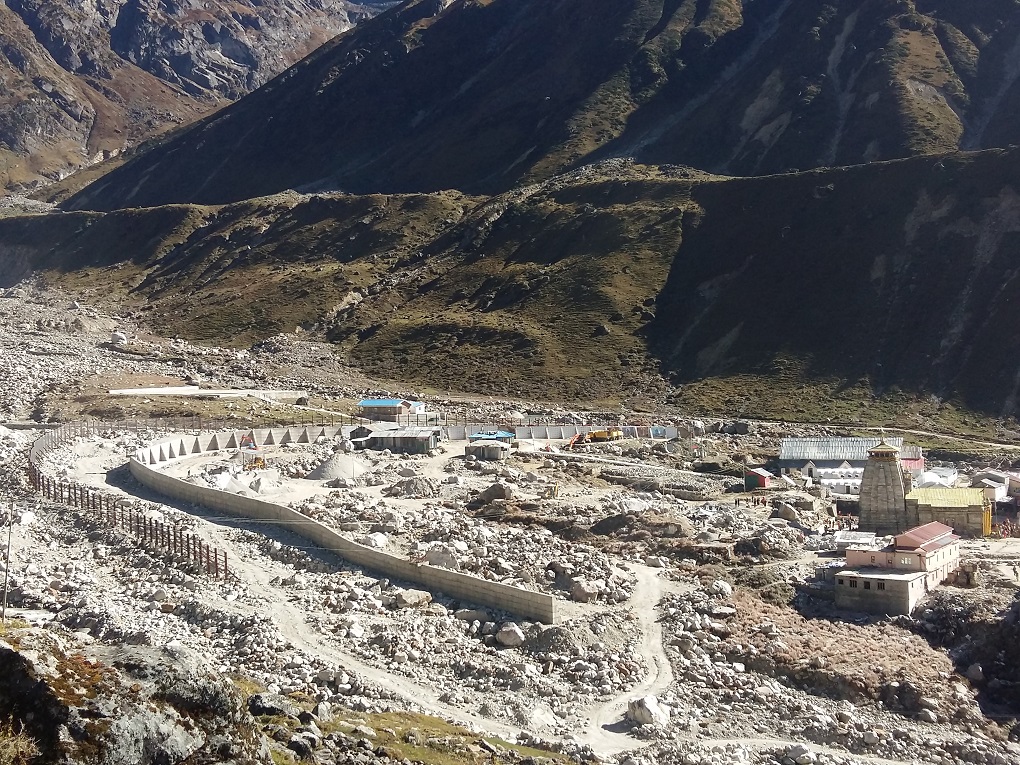
Despite what scientists say, a huge multi-layered wall is being built downstream to protect the pilgrimage spot from another flash flood. “The main purpose of this wall around Kedarnath town is to save it from future threats of floods and landslides,” says a worker at the spot, a threat that is unlikely to come in a century.
Also see: Climate change, poor policies multiply Himalayan flood effects
![<p>In 2013 the destruction caused by the overflow of the glacier lake was immense [image by: Hridayesh Joshi]</p>](https://dialogue.earth/content/uploads/2017/10/PIX-2-Kedarnath-destruction-2013.jpg)


